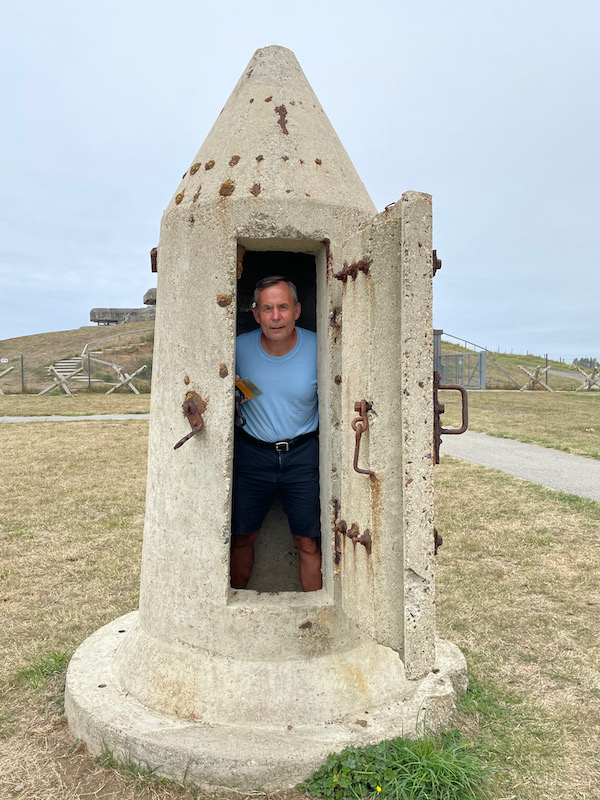Our Blog - Musée de Memoires 39-45
I had never heard of this museum before, but we decided that it would be interesting. Sure enough, it wasn't like any museum I had been in. In the middle of fields, next to the bay, a gigantic 5-story blockhouse that was used to defend the command center of the Graf Spee marine artillery battery, the most significant in Finistère in terms of size and firepower. It was turned into a museum by 2 brothers who were history-buffs.
The Atlantic Wall was built by the Germans from the Spring of 1942 to the Spring of 1944. It was more than 3,200 miles long with almost 15,000 concrete-reinforced sites. These bunkers were standardized so that they could be built very quickly. Each type of bunker, based on the specific use, had a specific set of plans that included everything from the concrete and steel reinforcements down to the ventilation and electrical systems. Since Brest was a strategic harbor for the German forces, the Graf Spee battery was one of the earliest built, starting in July 1940. Its purpose was to protect bay of Brest from enemy warships.
Only about 10% of the bunker is visible above ground. You can compare the first picture to the drawing in the second to see how much is not visible
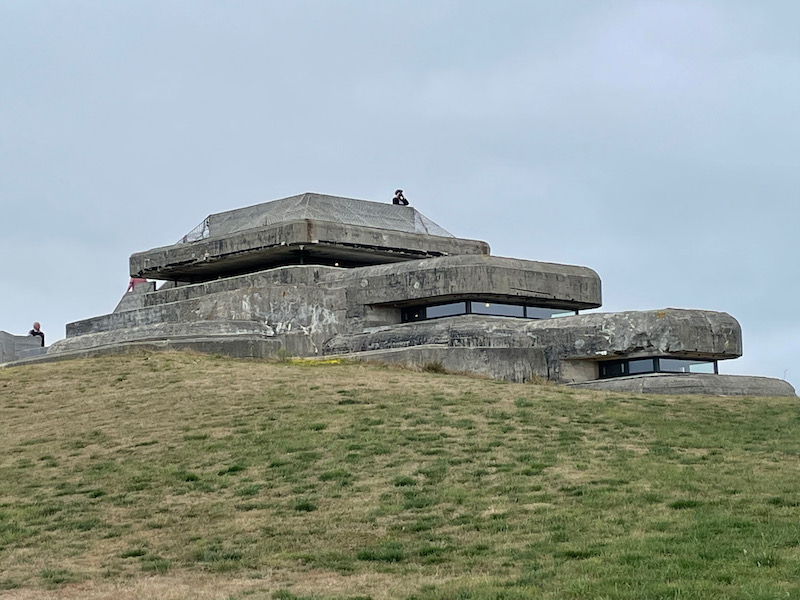
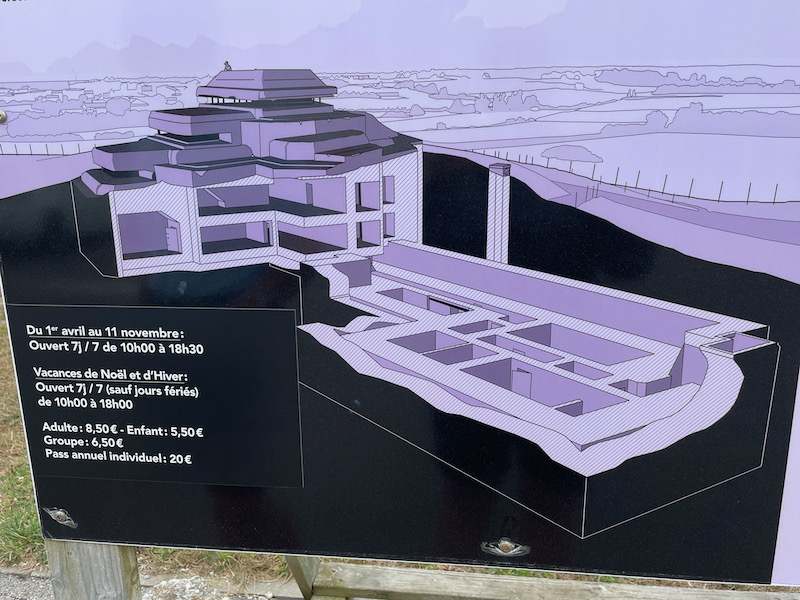
The museum itself is interesting ... the information is written like someone is talking to you, almost giving you a guided tour. For example, the first panel of information welcomed us to the battery and said "There are 25 of us on this floor: 24 NCOs and troops quartered in 2 large rooms". And here we see the one of the troop rooms and the bathroom.
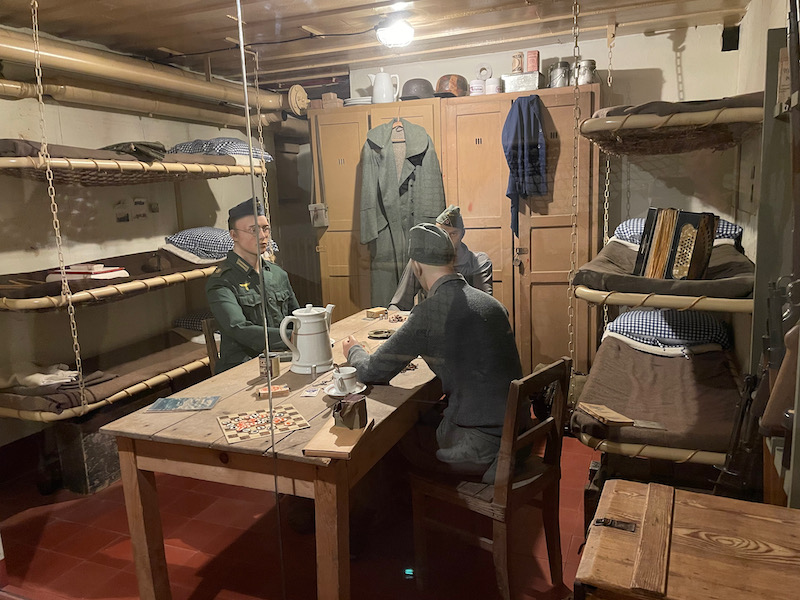
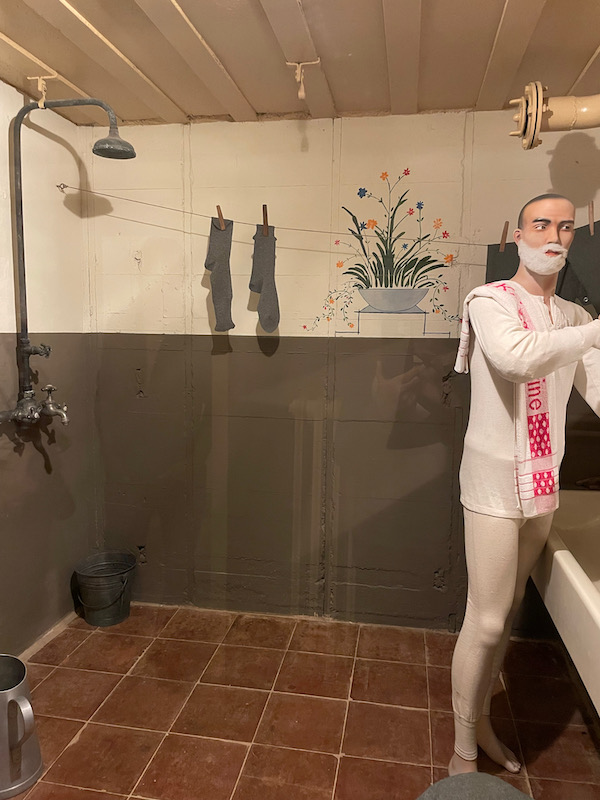
It also had, as you can imagine, quite a few pieces of equipment, like this British C-type air droppable containers. The allies could pack up to 130 kilos of equipment (weapons, ammo, uniforms, cash, food, or fuel) to provide to the resistance fighters. Thousands of these were dropped over Brittany during the war.
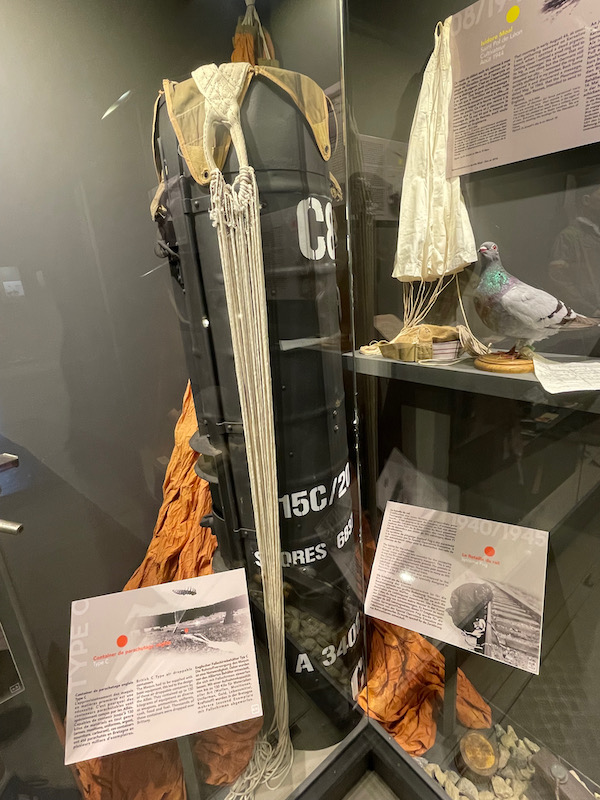
Here is the view out of the "window" at the top of the blockhouse ... looking out to the water. And then walking up to the very top, you can see the trench that outlined the battery.
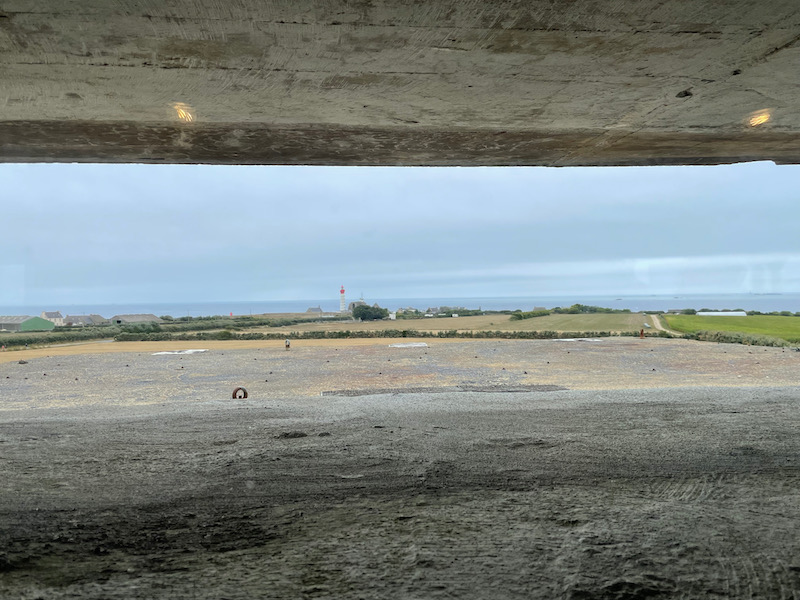
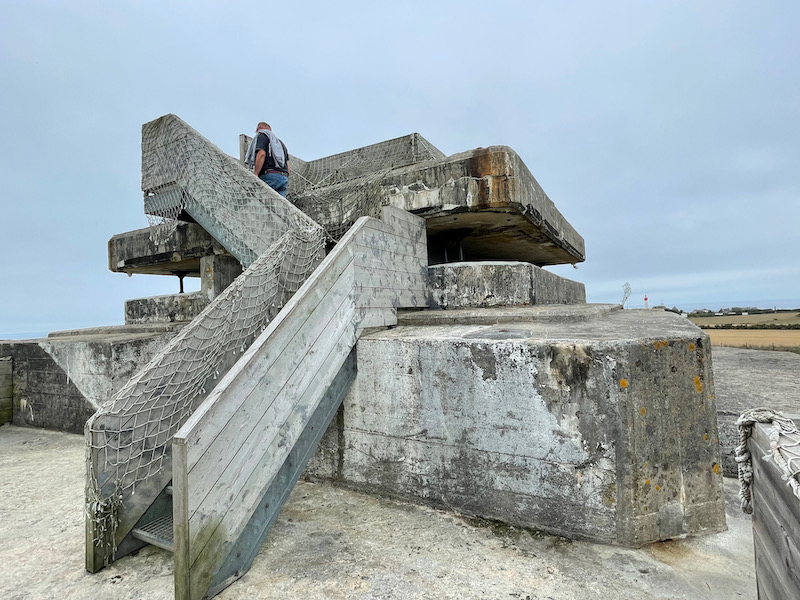
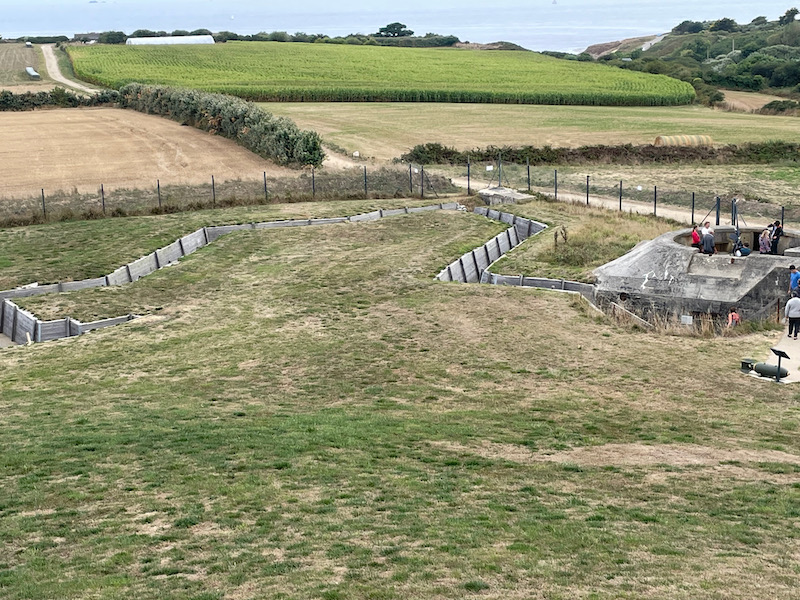
They have a set of military things dotted around the property. This first one is an American LCVP (Landing Craft Vehicle and Personnel). Over 20,000 of these were built during WW2 and they were the workhorses of the Allied landings. Once you see one up-close, you really wouldn't want to be in one! It is made of plywood except for the forward door, which is armored to protect the soldiers. I guess they assumed nobody would shoot from the side.
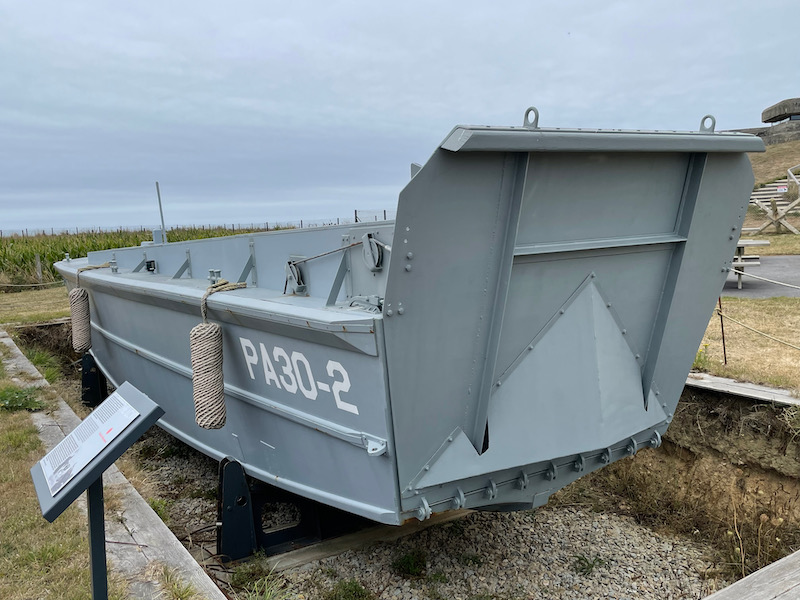
This is a 40mm Swedish Bofors gun. It had a crew of 8 gunners and had a range of 3800 meters. It wasn't new, however, having been in production since 1931 and bought by a variety of nations. During WW2, in fact, opposing forces were using the same equipment in some cases!
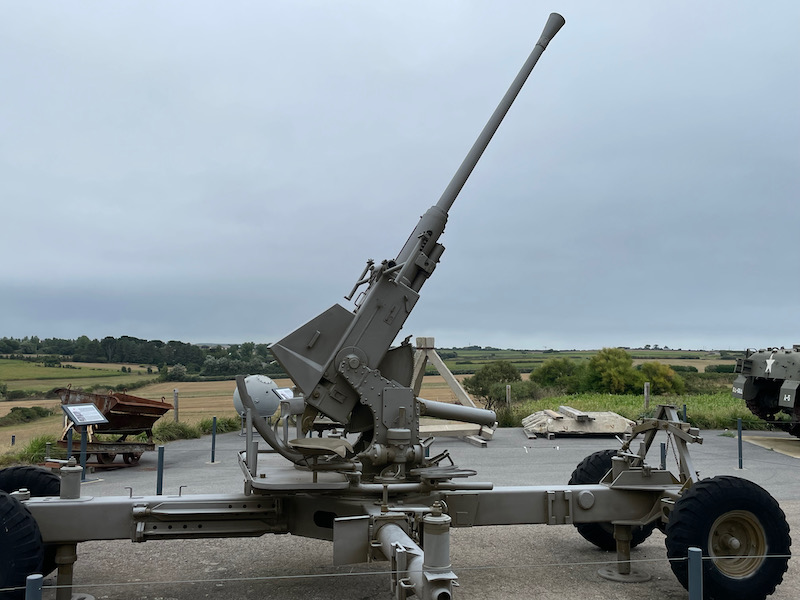
Tom is taking a crack at this German anti-aircraft gun. It has a 20mm gun with a firing rate of 120 rounds per minute.
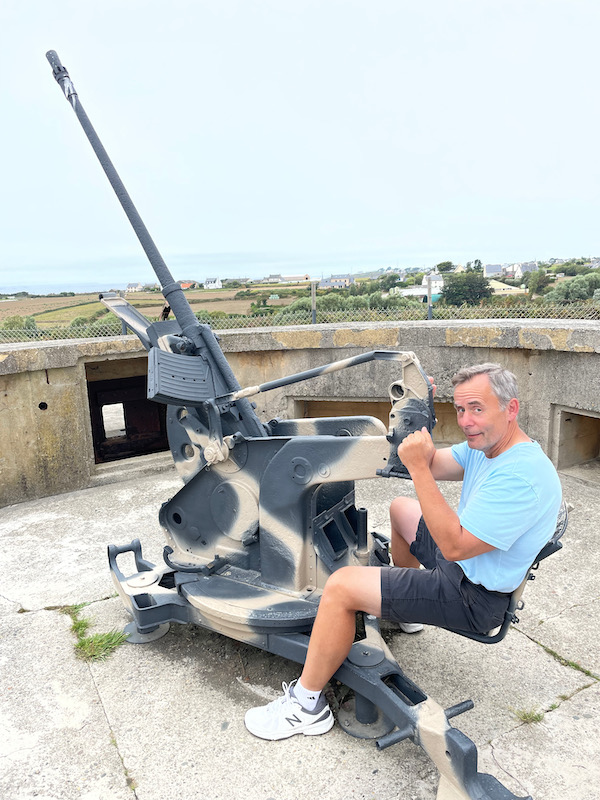
They also had this tank outside, a Sherman M4A1 fitted with a second generation T-23 turret and longer 76mm barrel. This brought it "closer" in performance to the German tanks, but the Sherman tanks were not on par with the best German tanks in terms of firepower.
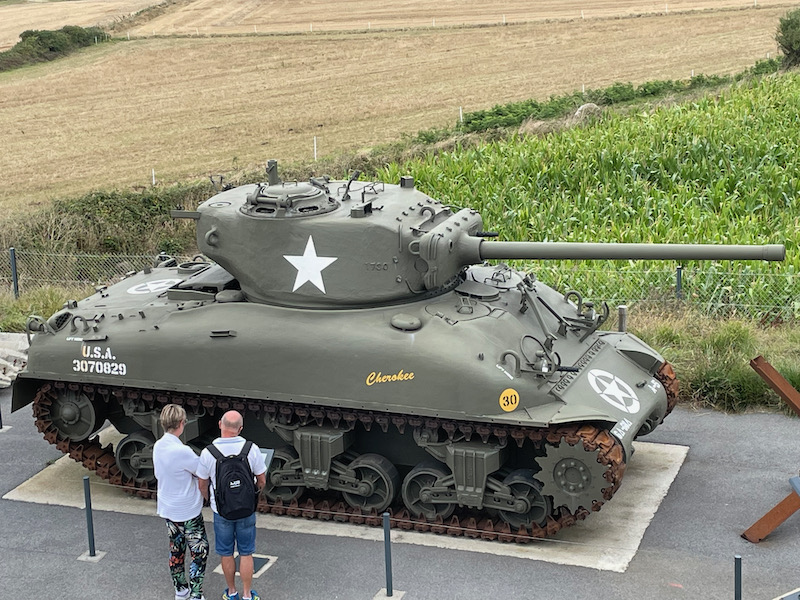
This is a concrete sentry box (with Tom keeping guard). Before 1943, the sentry boxes were simple wooden shelters, but with the increased air-raids, concrete boxes were built. The box is not actually from this blockhouse, but rather, from within the city of Brest. It was buried under debris and it was only excavated in 2017.
